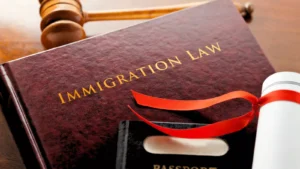
In today’s world, we are immersed in a constant stream of information. The media bombards us with stories of crime and justice, shaping our perceptions of criminals, victims, and the legal system itself. From sensationalised news headlines to gripping crime dramas, the media portrayal of crime is inescapable. However, how closely do these portrayals mirror reality, and what are the implications for true justice?
The field of media criminology delves into this complex relationship. It examines how the media constructs narratives about crime and how this influences public opinion, potentially even swaying the scales of justice.
For BA LLB students, understanding media criminology is crucial. It empowers you to recognise potential biases in media trials, identify the impact of media regulation (or lack thereof), and advocate for a justice system grounded in evidence, not public sentiment driven by media coverage.
Media Portrayal of Crime: Beyond the Headlines
The media’s depiction of crime often prioritises drama over accuracy, employing several common tropes:
- Focus on the Violent & Unusual: News prioritises violent crimes like murder and assault, even though statistically these are less common than property crimes or offences like theft. This creates a distorted public perception of crime trends.
For example, the intense, prolonged coverage of the Sushant Singh Rajput case dominated headlines, despite suicides being far more prevalent than homicides in India. This attention might overshadow the reality of crime.
- Emphasis on the Bizarre: The media amplifies rare, unusual crimes, downplaying the everyday nature of most offences. This reinforces the notion that crime is always shocking and unpredictable, increasing public anxiety.
Some of the recent news stories covered by the media are:
- A new twist in the case of firing outside Salman Khan’s home, when an accused was found hanging from a rope in police custody
- An Uttar Pradesh school van driver was arrested for harassing a Class 1 girl
- A Faridabad bank manager was rescued after being kidnapped at gunpoint and driven 800 kilometres
- A man suspected of stabbing an ice cream vendor in Delhi was arrested
- A man was arrested by Pune police for hacking a woman technician to death after an argument over an electricity bill
This skewed presentation creates a significant gap between media portrayals and actual crime statistics. Let’s consider some figures:
- Violent Crime: While news often fixates on murder, the National Crime Records Bureau (NCRB) data shows offences like assault, hurt, and kidnapping are far more common in India.
- Property Crime: Theft, burglary, etc., represent a significant portion of criminal activity, yet receive less media attention than sensationalized violent offences.
Such media portrayals of crimes create a perception that no one is safe in society.
- Moral Panics: Media-Driven Fear
The media’s focus on the shocking can trigger “moral panics” – periods of heightened public fear and outrage about a perceived criminal threat. This often leads to demands for harsher policies, even if the problem is exaggerated. Recent examples include:
- Crimes Against Women: Following high-profile cases like the 2012 Delhi gang rape, immense public pressure led to changes in sexual assault laws. While necessary, some argue the media-fueled disproportionate fear compared to the overall trends in such crimes.
- Drug-Related Crimes: Coverage of drug use among celebrities or high-profile arrests can create a perception of a widespread drug epidemic, sometimes leading to calls for draconian measures.
We want our BA LLB students to understand how these portrayals shape the public discourse around crime. They cause:
- Biased Public Perception: The public forms its understanding of crime largely through media. This puts pressure on the administration and even courts of law to rule what might be favoured by the public. Law students must recognise this and the potential for prejudice.
- Policy Implications: Public outcry spurred by the media can pressure lawmakers into passing ‘tough on crime’ laws that may not be effective solutions.
- Trial by Media: Sensationalised coverage can sway public opinion even before a trial begins, impacting its fairness. Cases become “media trials,” with the press potentially affecting the legal process.
Why This Matters?
Media criminology is vital for law students. Recognising these tropes empowers you to:
- Advocate for Evidence-Based Policy: Understand the gap between media-driven panic and statistical reality to push for policies based on facts, not fear.
- Protect the Integrity of Trials: Be aware of potential bias created by media coverage to ensure the right to a fair trial for all accused.
- Promote Media Literacy: Help the public become critical media consumers, recognizing sensationalism and its impact on their perception of crime and justice.
Media Trials and the Court of Public Opinion

Media representations of crime hold significant sway over public perceptions. Understanding how the media shapes our understanding of crime, criminals, and victims is a crucial component of media criminology. This has profound ramifications for BA LLB students, as future lawyers will need to navigate the complex relationship between media-fueled public sentiment and the pursuit of true justice.
Let’s analyse how media portrayals impact public views of crime undermining the justice one deserves:
For Criminals
Pre-Trial Bias
- The “Court of Public Opinion”: Intense media coverage, particularly in high-profile cases, can create a “media trial” where the accused is presumed guilty in the public eye before their day in court.
- Demonization: Media often villainises suspects, using inflammatory language and focusing on their alleged past misdeeds. This can seep into the minds of potential judges, making it harder to find impartial individuals.
- Prejudiced Narrative: If the media presents a highly biased narrative emphasising guilt, it becomes more difficult for the defence to establish an alternative version of events that creates reasonable doubt.
During the Trial
- Judge Exposure: It’s unrealistic to expect judges to completely disregard everything they’ve seen or read about a case in the media. Pre-trial publicity creates unconscious bias.
- Influencing Testimony: Witnesses and even victims might be subtly influenced by the dominant media narrative. This could unintentionally colour their testimony and recollection of events.
- Pressure on the Judge: In high-profile cases, judges might feel immense pressure from public scrutiny fueled by media coverage. This can make it harder for them to make rulings that are unpopular but legally sound.
Impact on Sentencing
- Public Outcry: Media-driven public outrage often leads to demands for harsh sentences, regardless of mitigating factors or legal precedent.
- Political Pressure: No one can deny the political pressures judges face constantly. This can lead to disproportionately severe punishments aimed at appeasing the public rather than focusing on rehabilitation or evidence-based sentencing guidelines.
Protection for Defendants
While freedom of the press is essential, there are safeguards in place to mitigate the most harmful effects of media portrayals:
- Change of Venue: In extreme cases, the trial might be moved to reduce the impact of local media coverage and increase the chances of finding impartial jurors.
- Gag Orders: Rarely, courts may issue orders limiting what the media or those involved in the case can publicly say to protect the fairness of the trial.
- Judges’ Instructions: Judges emphasise the need to base decisions solely on the evidence presented in court, not media reports. However, the effectiveness of this is debatable.
Media criminology helps us understand these complex dynamics. It pushes us to consider:
- Ethical Reporting: How can media report crime responsibly without compromising the right to a fair trial?
- Legal Reforms: Are stronger protections needed for defendants in the face of intense media scrutiny?
- Media Literacy: Educating the public to be critical consumers of crime news is essential to reduce the harmful impact of biased portrayals.
Read the second part of the article to learn more about how media trials pose a challenge to victims and recent cases of potential prejudicial impact: How Does Media Portrayal Of Crime Influence Justice? – Part 2




